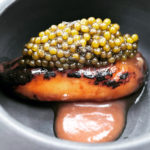The Beauty of Washoku Cuisine at Nisei
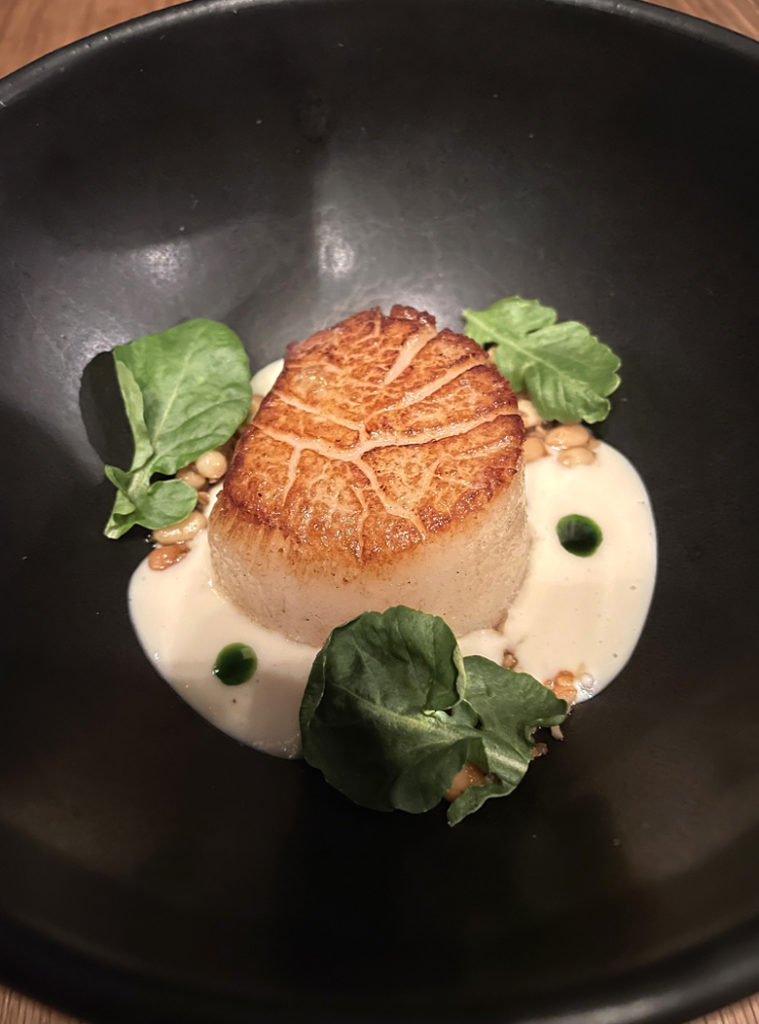
When you enter Nisei in San Francisco’s Russian Hill neighborhood, you may experience a little deja vu if you’ve dined at Michelin two-starred Californios in SoMa.
The walls are a dramatic dark charcoal, just like at that daring, high-end Mexican restaurant. Both establishments were designed by Carolyn Cantu, co-owner of Californios, to create a cloistered yet elegant atmosphere. Some of the plateware are rough-hewed. minimalist matte gray at both, too.
And of course, there’s also an uncanny banana-caviar dish at each that will leave you talking long after you’ve taken the last bite.
It’s all not by coincidence, but in tribute, as Nisei Chef David Yoshimura was formerly the chef de cuisine of Californios. He opened Nisei in August to spotlight washoku cuisine or Japanese home-cooking that has deep reverence for seasonality and purity of flavor, and is often centered around rice.
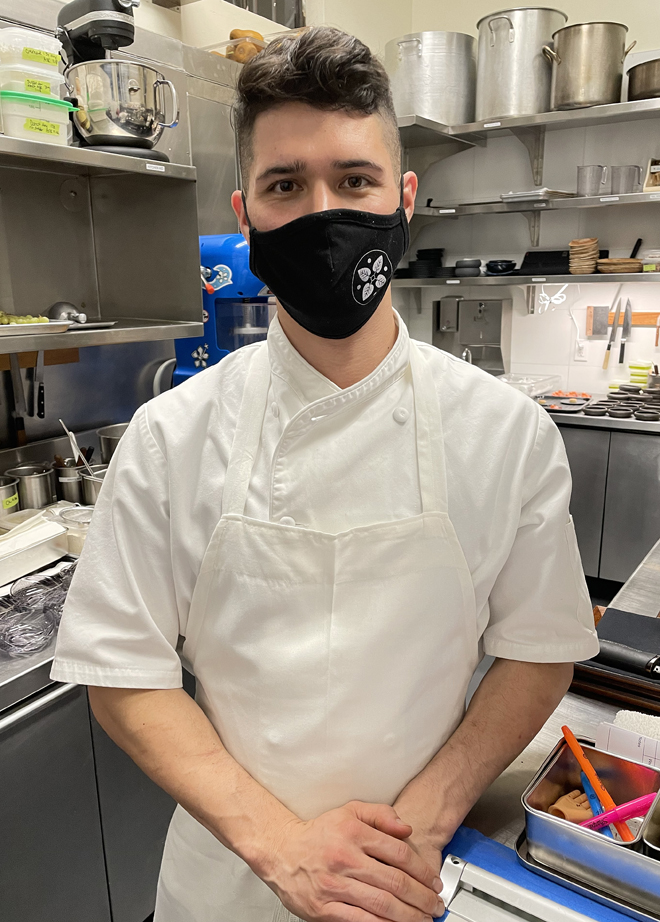
In other words, don’t come expecting California rolls and chicken teriyaki. In much the same way that Chef Val Cantu doesn’t do burritos necessarily, but has broadened the definition of Mexican food, Yoshimura, who also worked at New York’s cutting-edge wd-50, does so with Japanese-American food, serving a 12-course tasting menu for $184.
Nisei does not offer outside dining, though its Bar Iris next door, which serves up Asian-inspired craft cocktails and small bites, has a parklet. If you dine inside at Nisei, the host will carefully check your ID and proof of vaccination before seating you. When I was invited in as a guest of Nisei recently, the restaurant actually let my husband and I sit by ourselves in the private dining room — with its own portable air filter system off in a corner — since the room wasn’t otherwise booked.
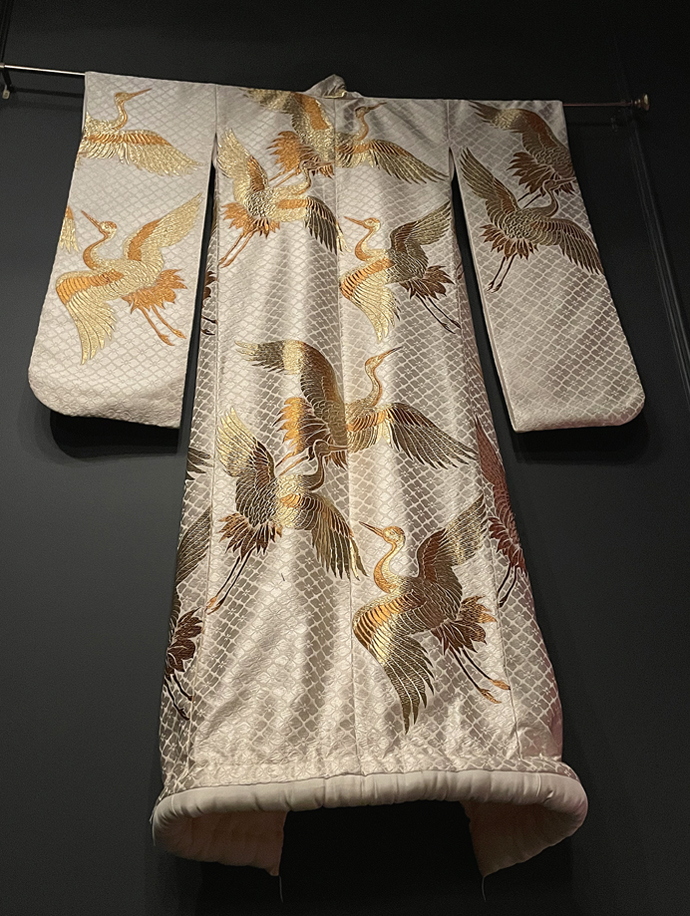
While the main dining room is adorned with brightly colored murals, the private dining room is more sedate with a gorgeous kimono hanging on one wall, and a unique triptych on another that’s over-layed with gold leaf designed to flake off over time, altering the work’s composition naturally. Fleetwood Mac and other classic rock tunes play over the sound system to impart a casualness to it all, despite the room’s inherent grace.

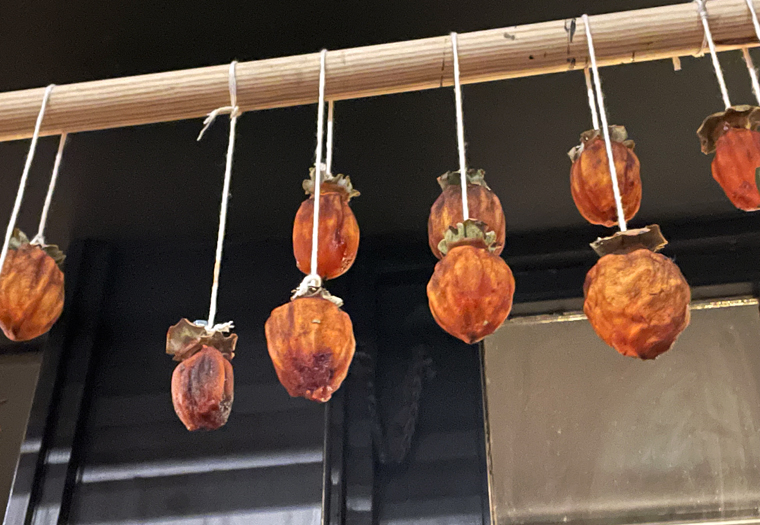
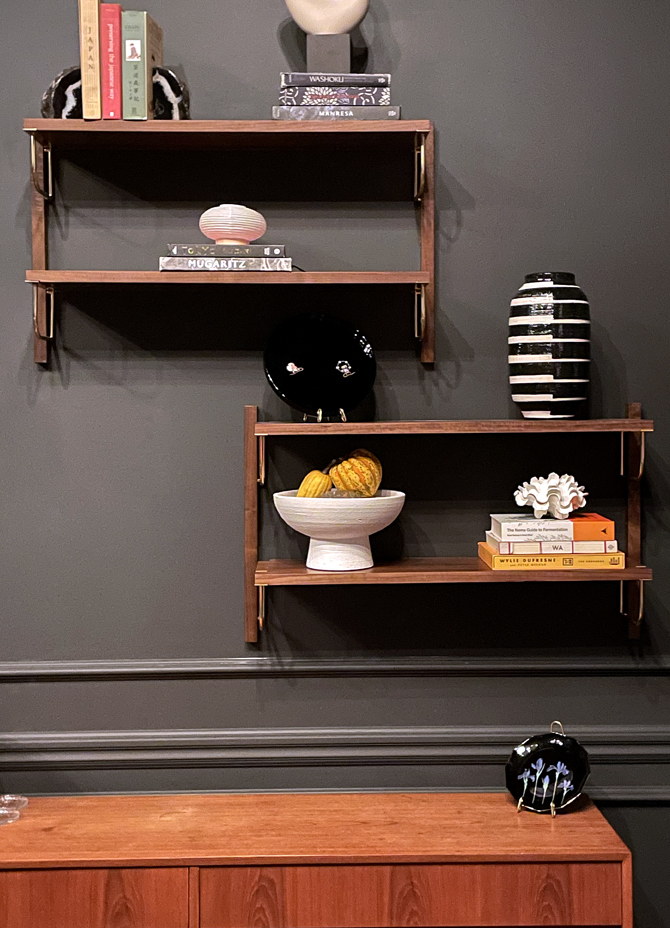
After warm towels are brought to the table, dinner begins with a tray of three bites: a smoked whipped potato croquette with a delicate shell topped with Santa Barbara uni; slices of silky cured red trout with pomegranate and minty-licorice-y anise hyssop; and the aforementioned banana-caviar dish.

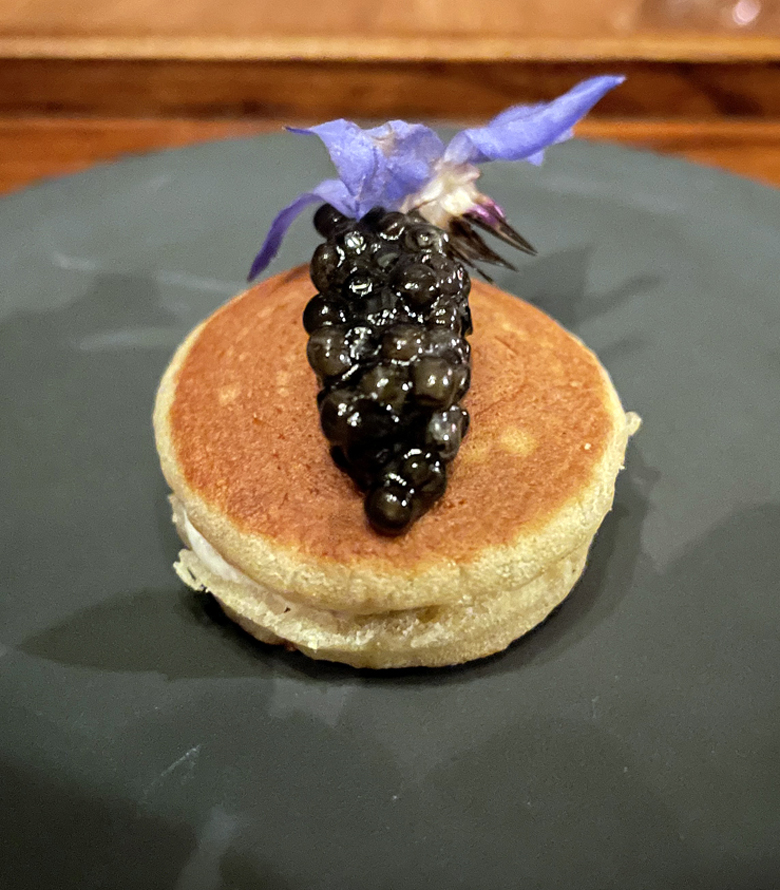
The latter is actually doriyaki, a traditional Japanese snack made of two small pancakes sandwiching sweet red bean paste. Yoshimura’s version is a tribute to Cantu’s, which was developed when he was at Californios. Rather than a caramelized banana with caviar and savory dulce de leche, Yoshimura fills his tiny pancake stack with sweet, whipped banana, then crowns it with caviar and a tiny bachelor button. It’s playful, clever, and a little more subtle in taste than Cantu’s. It’s like blini taken to a mind-bending level.
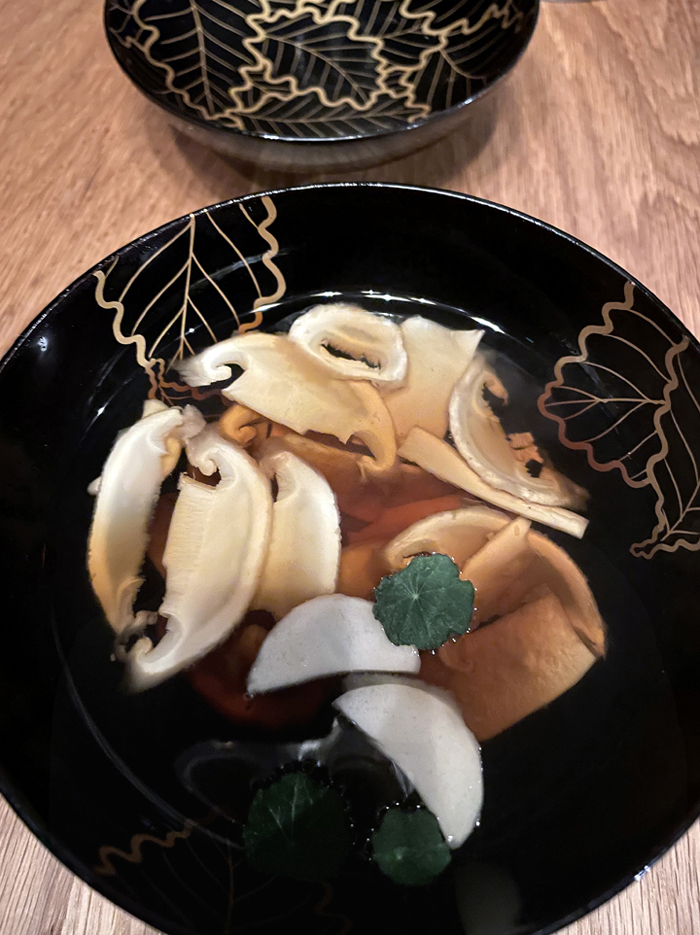
That’s followed by suimono, the traditional clear soup emboldened with fresh and pickled Matsutake mushrooms, and peppery Nasturtium flowers. It’s earthy, restorative and clean tasting.
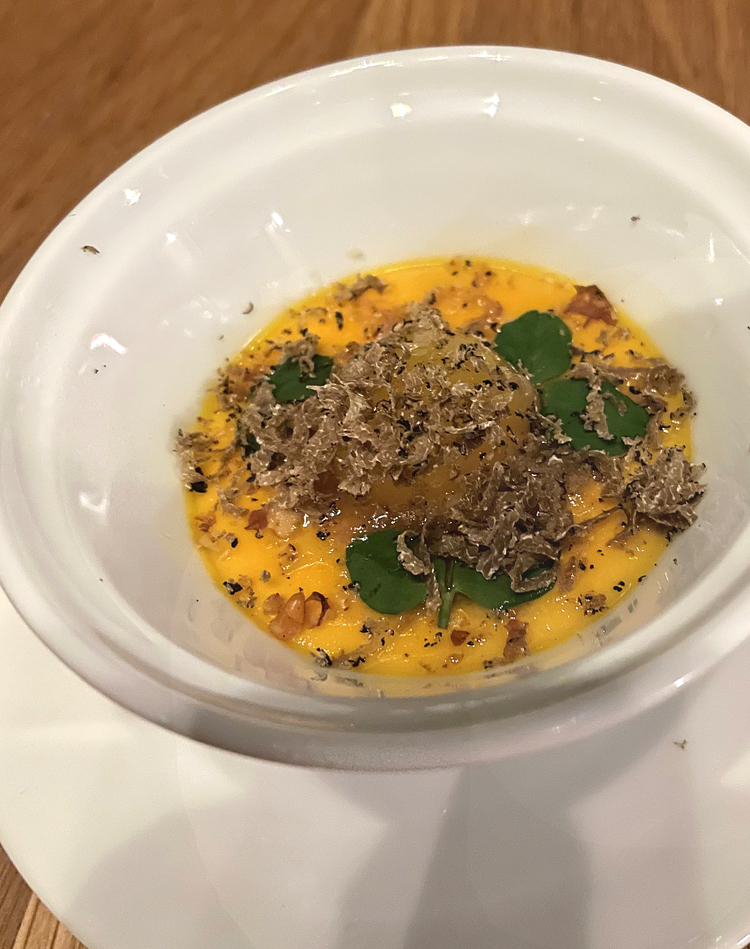
Next was one of my favorite dishes of the night: pumpkin chawanmushi. Black truffles are shaved overtop. And in the center lies an egg yolk, its texture custardy and thickened, having been cured with truffles. Take a spoonful of the chawanmushi sweetened by the pumpkin along with the yolk. The intense woody, earthy, and nutty taste of the truffle will just explode in your mouth. It almost boggles that such profound truffle taste could exist within this blip of yolk.
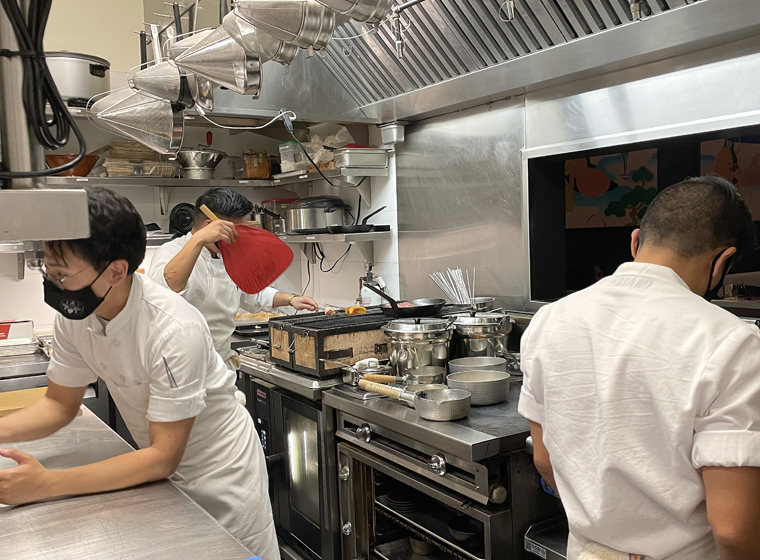
My husband enjoyed the seared scallop, while owing to my allergy, Yoshimura subbed in black cod for me. Both preparations were cooked over a grill fueled by binchotan, the Japanese charcoal that burns especially hot and imparts a deep smokiness. A creamy pool of pine nut miso at the bottom of the dish was rich, buttery, and deeply nutty tasting. The piney taste came through even more with a garnish of pine-nut crisp that added a lick of sweetness.
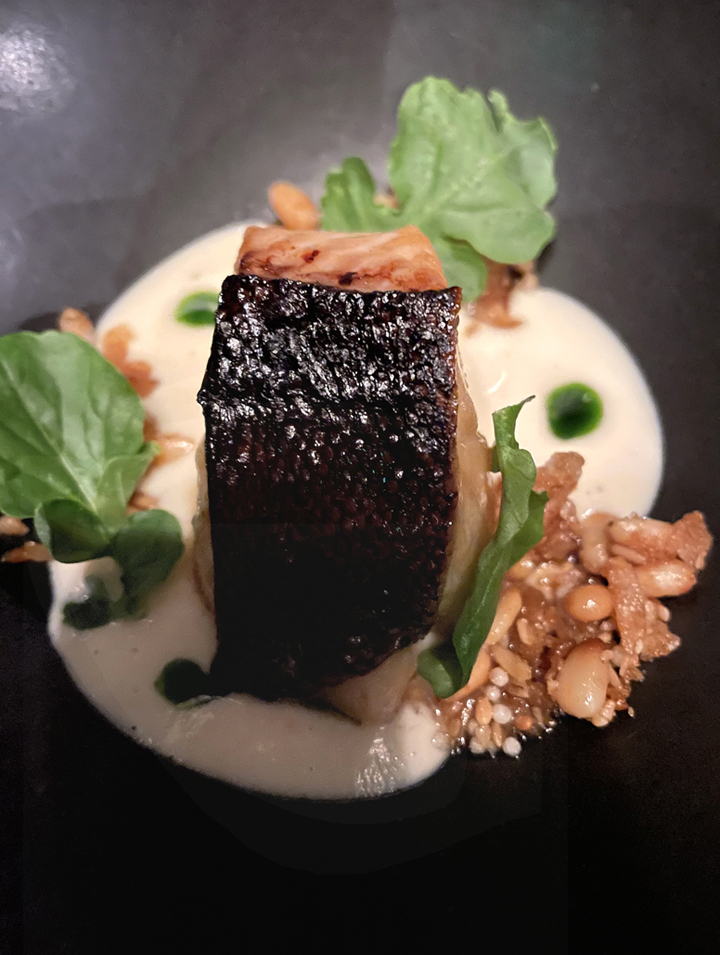
I was so excited for the unagi raised sustainably on a farm in Maine that I confess I ate it before realizing I hadn’t photographed it first. My bad! The restaurant gets the eels live, and keeps them in a tank until ready to use for the ultimate in freshness. The supple unagi, wonderfully smoky from the grill, came topped with its bones fried to a deep crunch so that they were completely edible like potato chips. There was a little pinch of grated daikon off to the side, a traditional accompaniment, as well as a crisp, beautifully lacquered and glazed wedge of lotus root.
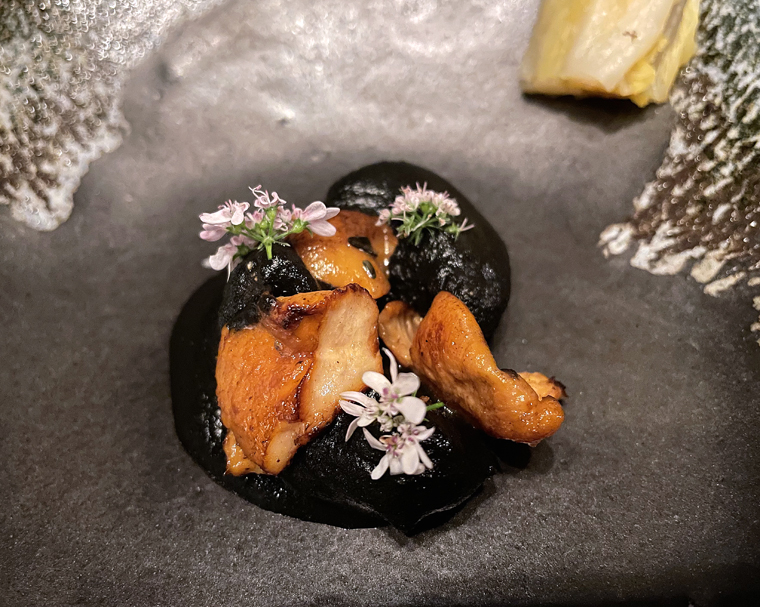
Japanese black curry starred alongside nuggets of golden, fried sweetbreads and petite chanterelles. The black curry reminded me so much of Mexican mole negro — dark as night, deeply caramelized, and incredibly savory, with a touch of raisin-like sweetness. Fermented cabbage lay off to the side, a condiment to perk up the palate after bites of the robust curry.
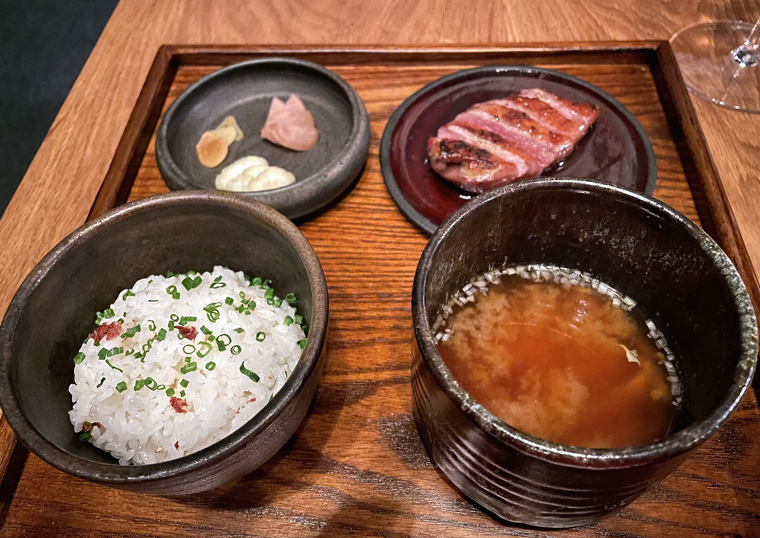
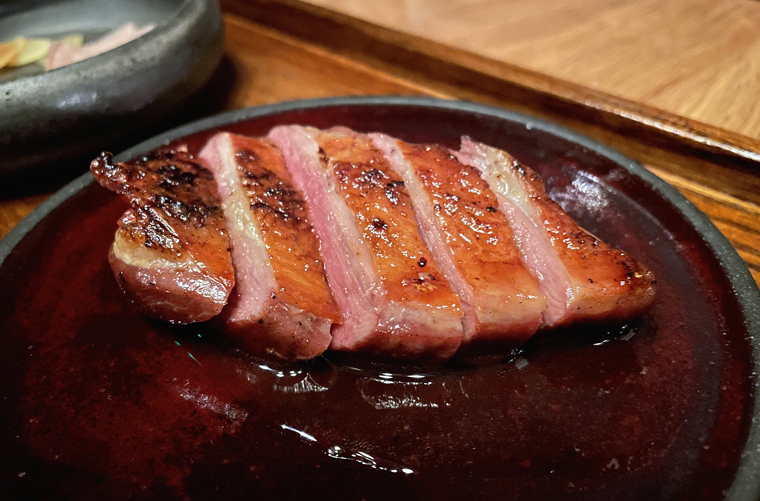
The final savory course was ichiju sansai, which translates literally into “one soup three dishes.” It consisted of smoked and grilled squab leg confit that was exquisitely tender; plus a soothing and deeply flavored smoked squab miso broth with Hodo yuba strands; Rue & Forsman Ranch rice that makes you realize just how satisfying a bowl of perfect fluffy white grains with natural starchy sweetness can be just on its own; and lastly, pickles of powerful tasting miso-marinated garlic clove, crunchy watermelon radish, and crisp-salty aged daikon. It’s a simple presentation with all the dishes arriving on a humble wooden tray, belying the effort that definitely went into it all.
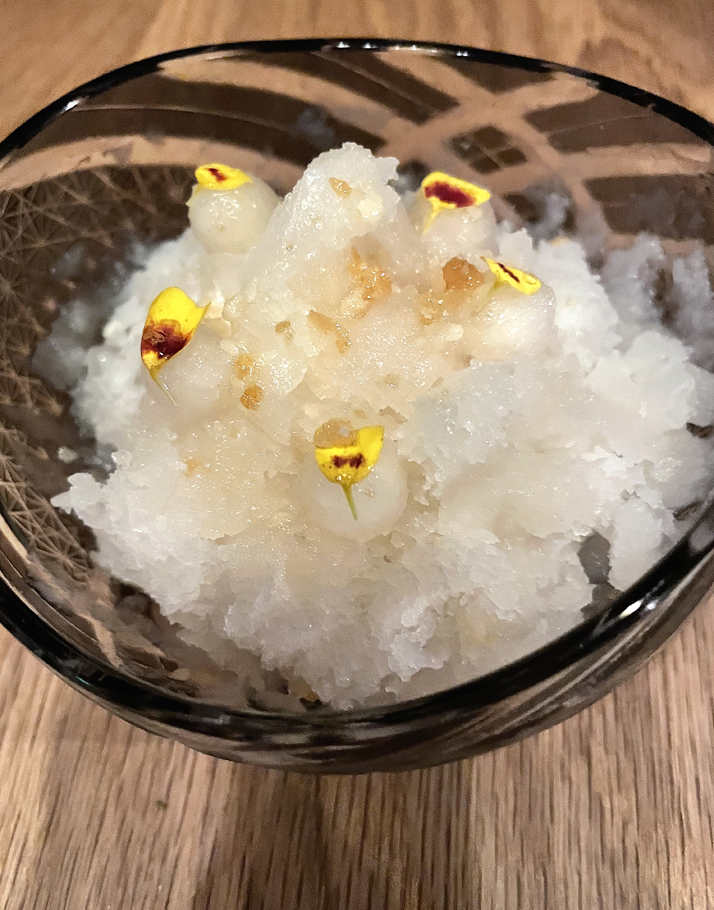
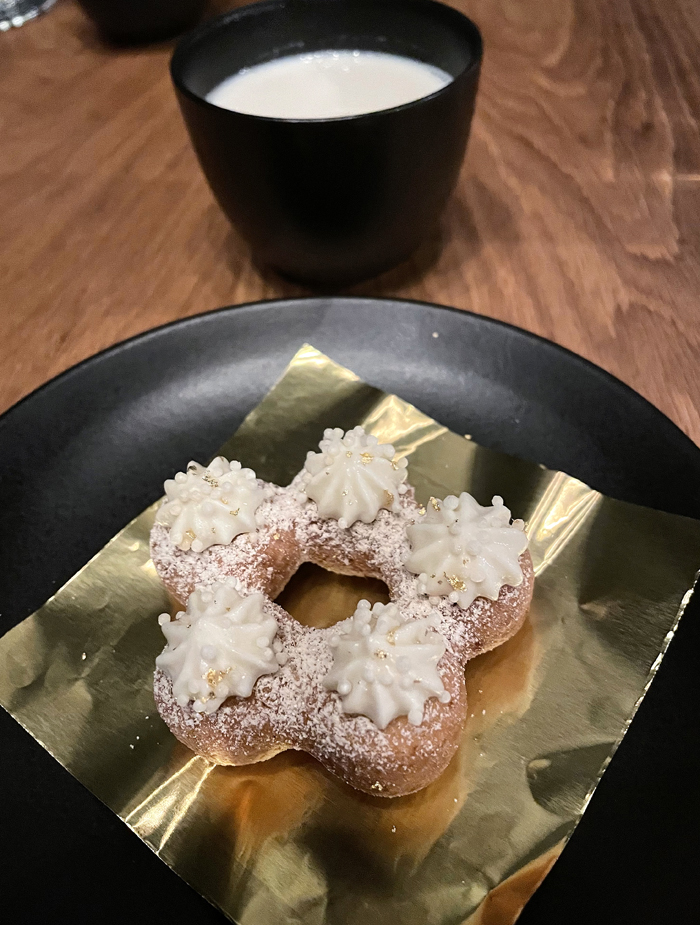
To clear the palate, there’s a shave ice-like course with an airy mound of ice decorated with marigold flowers that hides a scoop of sorbet underneath made with K&J Orchards pears. A ginger syrup, steeped with the rhizome’s skin so as not waste anything, gets poured over at the table for a punch of prickly warm sharpness. The surprise is the pop rocks. While pop rocks can be a cliche, they actually work really well here, with the crystals mimicking the ice yet providing a gentle fireworks show on your tongue.
The next dessert will bring a smile, no matter what your age. After all, who doesn’t love a whole donut to themselves? Delightfully chewy, and not overly sweet, this mochi donut gets an autumnal chestnut-like flavor from kinako, roasted soybean flour.
It comes with warm chestnut milk. I was asked if I would like it spiked with Licor 43, a sweet Spanish liqueur made with 43 ingredients. I whole-heartily went for it. You should do the same. The warm chestnut milk on its own is sweet, nutty, and calming. It actually reminds me of a childhood treat that my mom and brother used to make with milk warmed with rock sugar and an egg beaten into it. However, when you add the Licor 43 — aromatic with vanilla, cardamom and cinnamon — the chestnut milk turns into the world’s best nightcap. It’s what you want in a mug as you lounge in your flannel pajamas, snuggled in a quilt in front of a roaring fireplace. Honestly, if they had let me, I would have just curled up in a corner of the private dining room and slumbered after the last sip.
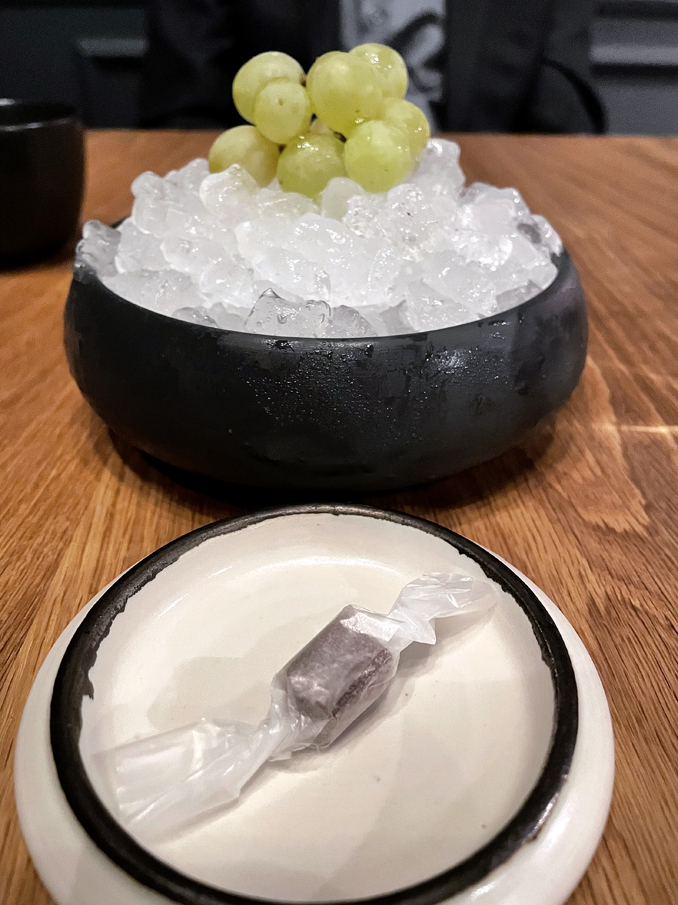
Good thing I didn’t, though, because there was one final bite to enjoy — chilled Champagne grapes on a bed of ice and a single Japanese candy known as yokan made from red bean paste and pluots. Wrapped in edible paper, you plop the whole thing in your mouth to enjoy. Sweet, tangy, chewy and with a big plum taste, it was reminiscent of a favorite childhood Chinese candy of thin wafers of dried plum that come in a roll.
That’s the beauty of Nisei. The food is elevated yet simultaneously nostalgic and comforting, too.
